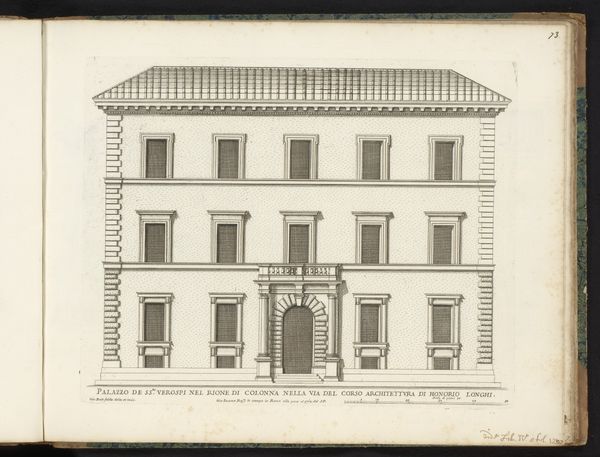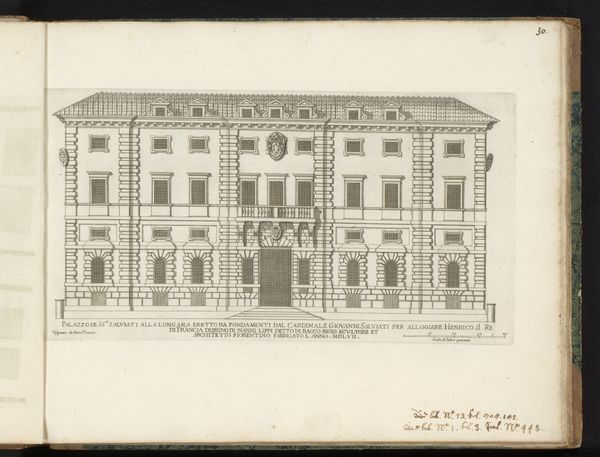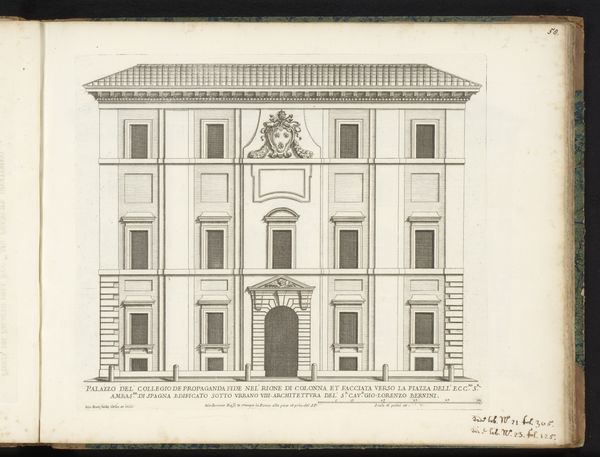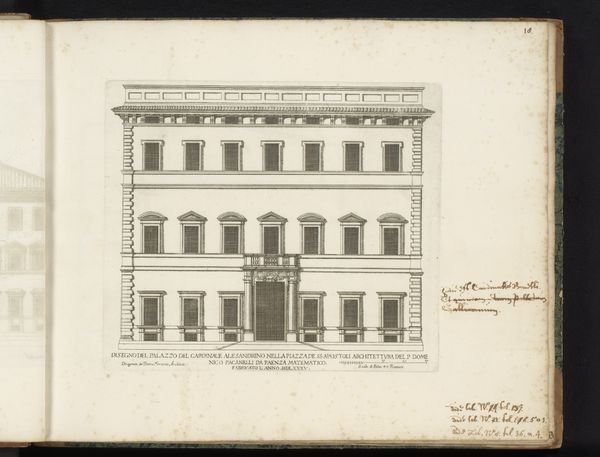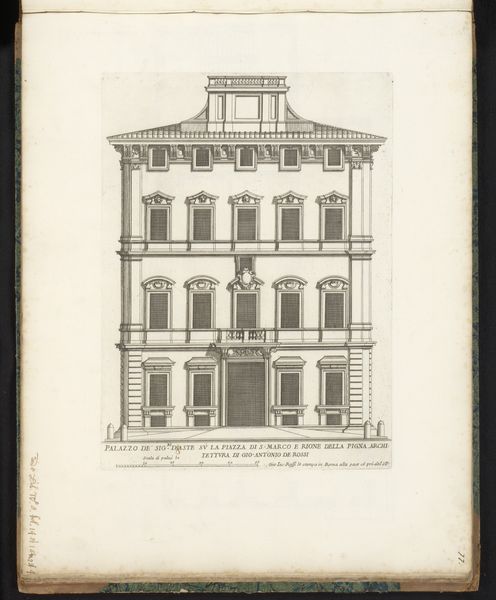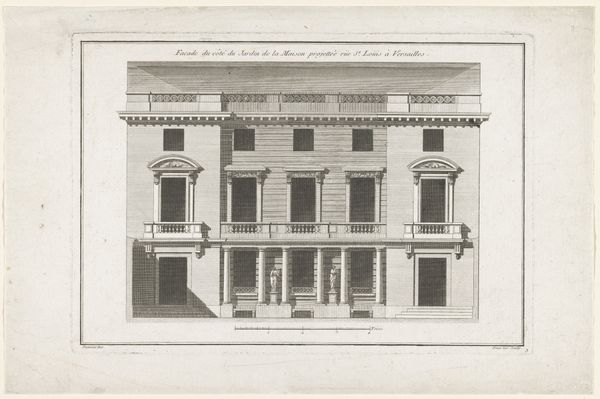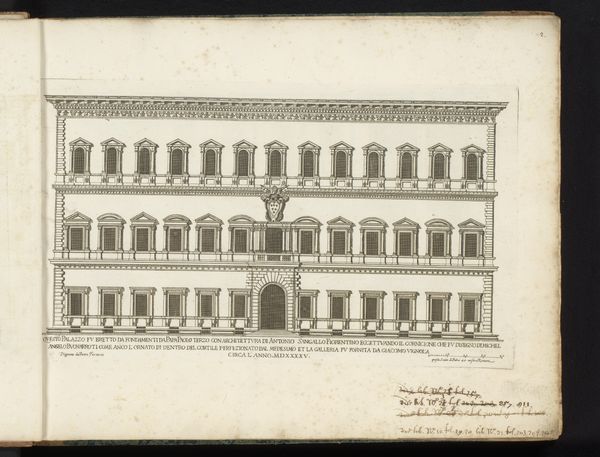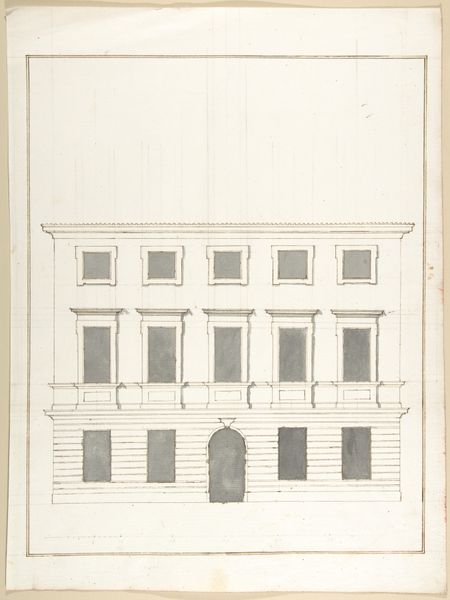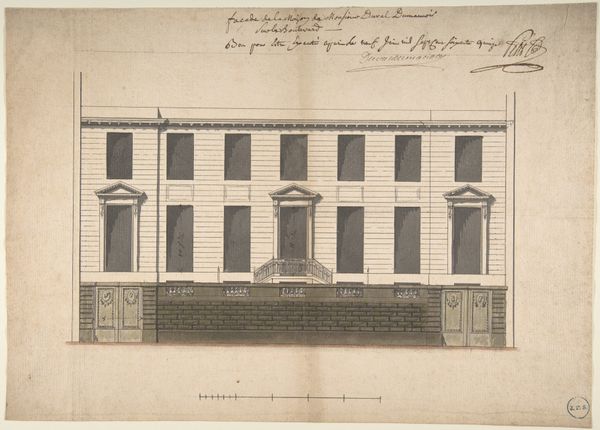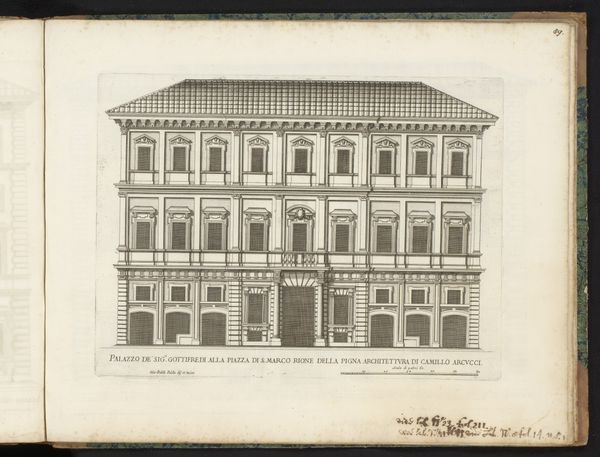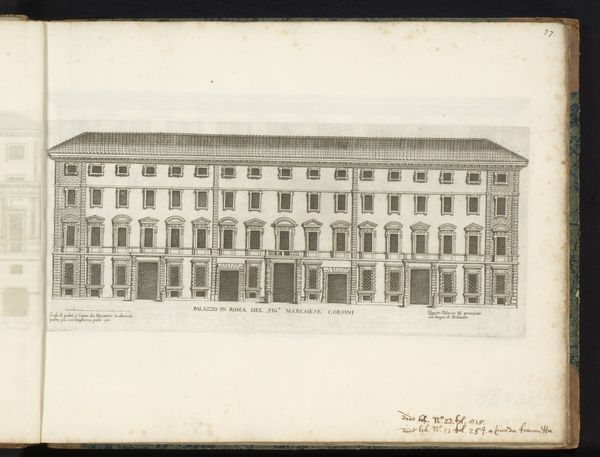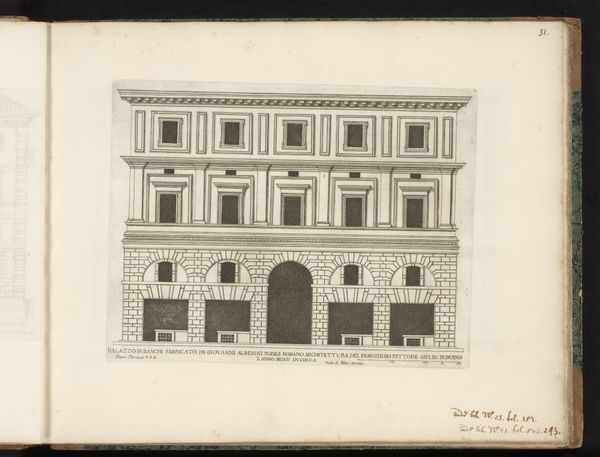![Design of the Side Elevation for the Casino of the Villa Patritj [Patritii] at Porta Pia by Pietro Paolo Coccetti (Cocchetti)](/_next/image?url=https%3A%2F%2Fd2w8kbdekdi1gv.cloudfront.net%2FeyJidWNrZXQiOiAiYXJ0ZXJhLWltYWdlcy1idWNrZXQiLCAia2V5IjogImFydHdvcmtzL2Q1Zjk2ZWY3LWI0ZDUtNGE1NC1iNTE4LWZjODMyZTNmNjE0Yy9kNWY5NmVmNy1iNGQ1LTRhNTQtYjUxOC1mYzgzMmUzZjYxNGNfZnVsbC5qcGciLCAiZWRpdHMiOiB7InJlc2l6ZSI6IHsid2lkdGgiOiAxOTIwLCAiaGVpZ2h0IjogMTkyMCwgImZpdCI6ICJpbnNpZGUifX19&w=3840&q=75)
Design of the Side Elevation for the Casino of the Villa Patritj [Patritii] at Porta Pia 1710 - 1727
0:00
0:00
Dimensions: 13-3/8 x 16-3/4 in. (34 x 42.5 cm)
Copyright: Public Domain
Curator: We are looking at "Design of the Side Elevation for the Casino of the Villa Patritj at Porta Pia" by Pietro Paolo Coccetti, dating from 1710 to 1727. It’s an architectural sketch, an etching rendered in pen and brown ink, located at the Metropolitan Museum of Art. Editor: My first thought is order. This elevation is so incredibly balanced and measured, almost to a fault. It’s calming, in a way, but also…impersonal? Curator: Indeed, its appeal arises directly from its geometry. Note the repeated rectangles and the clear, mathematically driven divisions of space. The façade is neatly structured, its parts interacting to achieve equilibrium through ratio and proportion, characteristic of neoclassicism. Editor: And what cultural associations were those shapes intended to convey, beyond pure order? This almost severe regularity, with its echoes of classical temples, what symbolic work is that doing? Curator: Neoclassicism sought to return to the perceived purity of classical art from antiquity. Geometric forms suggested reason, civic virtue, and a stable social order. Think of it as a visual metaphor for Enlightenment ideals, imposing rational structure onto the natural world. Editor: It's interesting that you frame it as a "return to purity," because I see, for instance, the cartouches and festoons over the central door and upper windows as elaborate additions. Where exactly do we locate 'purity' amidst these later augmentations of previous structures? Curator: While purity is of course subjective, the symmetry and balance outweigh the additional details. Even these so-called ‘augmentations’ serve to maintain the underlying geometric unity; they add visual interest while remaining subordinate to the overall structure. Editor: It appears there are notations along the base...Do they function as codes to deciphering the foundational intent, serving as reminders that architecture, at its essence, fulfills the promise of security, safety, and protection from external forces? Curator: Precisely! It's tempting to see it as merely a pleasing elevation but by including these measured scales, Coccetti ensures that this elevation functions not just as art but as an effective instruction, with the correct distribution of spaces being necessary. Editor: Ultimately, it's a powerful statement. It demonstrates how architecture uses mathematical structures, to translate philosophies of harmony and balance into literal, inhabitable forms. Curator: Indeed. The beauty of Cocchetti’s architectural sketches lies not just in their visual appeal, but in their articulation of core philosophical beliefs via line, form and the symbolism embedded within proportional relationships.
Comments
No comments
Be the first to comment and join the conversation on the ultimate creative platform.

